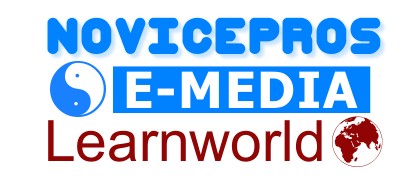I am actually not a person of mathematics whatsoever…. I am only a conquistador by nature, an adventurer.
(Sigmund Freud, letter to Fleiss, 1900)
“If you bring forth that which is in you, that which you bring forth will become your salvation”.
(The Gospel of Thomas)
“No, our science is no illusion. But an illusion it is to suppose that what science cannot give us we cannot get elsewhere.”
(Sigmund Freud, “The Future of an Illusion”)
Harold Bloom known as Freud”The fundamental creativity of our era”. This psychoanalysis isn’t a scientific theory in the demanding sense of the term. Yet, many criticisms of Freud’s work (by the likes of Karl Popper, Adolf Grunbaum, Havelock Ellis, Malcolm Macmillan, and Frederick Crews) cling to his – long-debunked – technological pretensions.
Today it is widely accepted that psychoanalysis – though some of its tenets are testable and, indeed, have been experimentally tested and always proven to be untrue or uncorroborated – is a method of ideas. It is a cultural construct, and also a (suggested) deconstruction of the human mind. Despite ambitions to the opposite, psychoanalysis isn’t – and never was that a value-neutral physics or dynamics of the mind.
Freud stands accused of generalizing his perversions and of reinterpreting his patients’ accounts of their memories to fit his preconceived ideas of the unconscious. The tradition of psychoanalysis as a treatment was castigated as a crude kind of brainwashing within cult-like configurations.
Feminists criticize Freud for casting women in the role of”faulty” (naturally castrated and inferior) guys. Scholars of civilization expose the middle-class and Victorian roots of his theories about suppressed spirituality. Historians decry and deride his stifling authoritarianism and regular and expedient conceptual reversals.
Freud himself could have blamed many of these diatribes into the defense mechanisms of his critics. Projection, immunity, and displacement appear to be playing a very prominent role. Psychologists are taunted by the lack of rigor of their profession, by its literary and literary qualities, by the dearth of empirical support for its assertions and fundaments, by the ambiguity of its language and ontology, by the derision of”appropriate” scientists in the”hard” disciplines, and by the constraints imposed by their experimental subjects (people ). These are the shortcomings they attribute to psychoanalysis.
Indeed, emotional narratives – psychoanalysis original and foremost – aren’t”scientific concepts” with no stretch of the much-bandied label. They are also unlikely to become ones. Rather – such as myths, religions, and ideologies – they are currently organizing principles.
Psychological”theories” don’t explain the world. At best, they describe reality and provide it”true”, emotionally-resonant, heuristic and hermeneutic significance. They are less concerned with predictive feats compared to”healing” – the restoration of harmony among people and inside them.
Therapies – the practical applications of emotional”concepts” – are more concerned with function, order, type, and ritual compared to the character and replicable performance. The interaction between therapist and patient can be a microcosm of society, an encapsulation and reification of all kinds of social intercourse. Granted, it is more structured and relies upon a body of knowledge gleaned from millions of encounters that are similar. Nonetheless, the therapeutic procedure is not anything more than an informed and educational conversation whose usefulness is more well-attested to.
Both the mental and scientific concepts are all creatures of their times, kids of those societies and cultures in which they have been imagined, culture-bound along with context-dependent. Therefore, longevity and their legitimacy are obviously suspect. The two hard-edged scientists and thinkers in the”softer” disciplines are influenced by contemporary values, mores, events, and interpellations.
The difference between”appropriate” theories of dynamics and psychodynamic concepts is the prior asymptotically hope to an objective”fact””out there” – whereas the latter emerge and also emanate from a kernel of internal, introspective, truth that’s immediately recognizable and is the bedrock of their speculations. Scientific concepts – as opposed to emotional”concepts” – need, consequently, to be tested, falsified, and modified because their truth isn’t self-contained.
Psychoanalysis was, when elaborated, a Kuhnian paradigm change. It broke with the last completely and radically. It created an amount of fresh, unsolved, problems. It suggested new methodological procedures for gathering empirical evidence (research strategies). It was based on observations (but scant and biased). To put it differently, it was experimental in nature, not only theoretical. It provided a frame of reference, a sphere within which new ideas grown.
That it failed to generate an abundance of hypotheses that are testable and also to accounts for discoveries in neurology doesn’t detract from its significance. The two relativity theories were and, string theories are all also in the same position in relation, now.
Back in 1963, Karl Jaspers created an important distinction between the activities of Verstehen and Erklaren. Erklaren is all about finding pairs of effects and causes. Verstehen is all about grasping connections between incidents, sometimes unconsciously and non-causally. Psychoanalysis is around Erklaren, not roughly Verstehen. It is a hypothetico-deductive way of gleaning events in a individual’s lifetime and generating insights about their relation to his current frame of functioning and mind.
So, is psychoanalysis a science, pseudo-science, or sui generis?
Psychoanalysis is a field of research, not a theory. It is teeming with neologisms and formalism however, such as Quantum Mechanics, it has interpretations that are incompatible. It is, hence, equivocal and self employed (recursive). Psychoanalysis dictates that which constitutes its own falsification and which of its hypotheses are testable. To put it differently, it is a meta-theory: a theory about theories .
Additionally, psychoanalysis the theory is frequently mistaken with psychoanalysis the treatment. Conclusively proving that the treatment works does not establish the historicity the veridicality, or the viability of the theory’s edifice. What’s more, therapeutic techniques evolve substantially and far more quickly compared to theories that yield them. They are self-modifying”moving targets” – perhaps simple rigid and replicable procedures and rituals.
Another obstacle in trying to establish the worth of psychoanalysis is its ambiguity. It is unclear, for instance, what in psychoanalysis qualify causes – and what because their effects.
Consider the crucial construct of the subconscious. Can it be the reason behind – does it trigger – conscious thoughts, our behaviour, and feelings? Does it provide them with a”ratio” (explanation)? Or are they only signs of processes that are inherent that are inexorable? Even these basic questions receive no”lively” or”physical” remedy in timeless (Freudian) psychoanalytic theory. So much for its pretensions for a scientific undertaking.
Psychoanalysis is supported by epistemic accounts, starting with the master . It appeals to the common sense and experience of one. Its claims are of those kinds:”specified X, Y, and Z noted by the individual – doesn’t it stand to (everyday) reason that A caused X?” Or”We know that B causes M, so that M is quite similar to X, and that B is quite similar to A. Is not it sensible to suppose that A causes X?” .
In treatment, the individual later affirms these insights by sensing they are”directly” and”right”, they are epiphanous and revelatory, they have retrodictive and predictive abilities, also by reporting his reactions into the therapist-interpreter. This acclamation seals the story’s probative significance as a basic (not to mention primitive) form of explanation which supplies a timeframe, a coincident pattern, also sets of teleological aims, ideas and values.
Juan Rivera is right as Robert Vaelder implied that Freud’s claims about life cannot be demonstrated, not even with a Gedankenexperimental movie camera. It is equally true that the etiological asserts of the theory are epidemiologically untestable, as Grunbaum says. But these failures overlook aim and the purpose of psychoanalysis: to provide an organizing and detailed , non-tendentious, and persuasive narrative of emotional development.
If such a narrative be testable and falsifiable or else discarded (as the Logical Positivists triumphed )?
Depends when we want to deal with it as a art form or as science. This is the circularity of these debates against psychoanalysis. If Freud’s job is regarded as the contemporary equivalent of fantasy, religion, or literature – that it does not need to be tested to be considered”true” in the deepest meaning of the term. After all, just how much of the 19th century’s science has lived to this day anyway?







Customer Reviews
Thanks for submitting your comment!